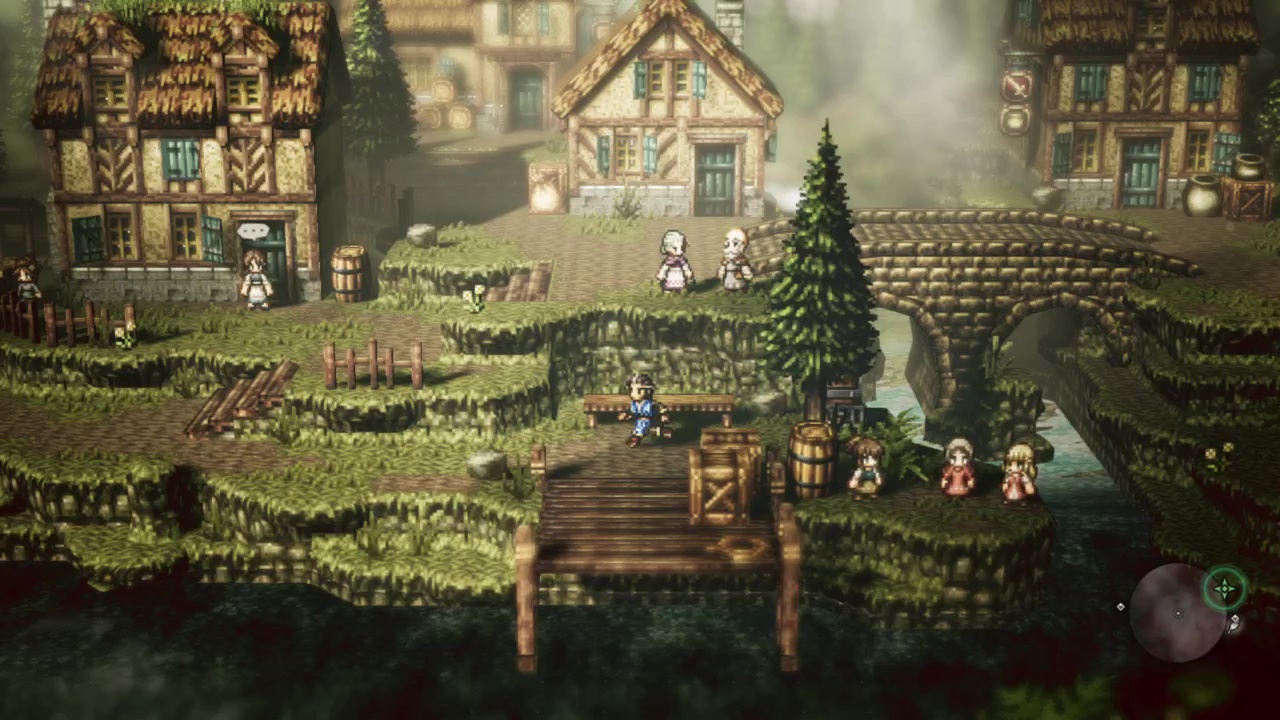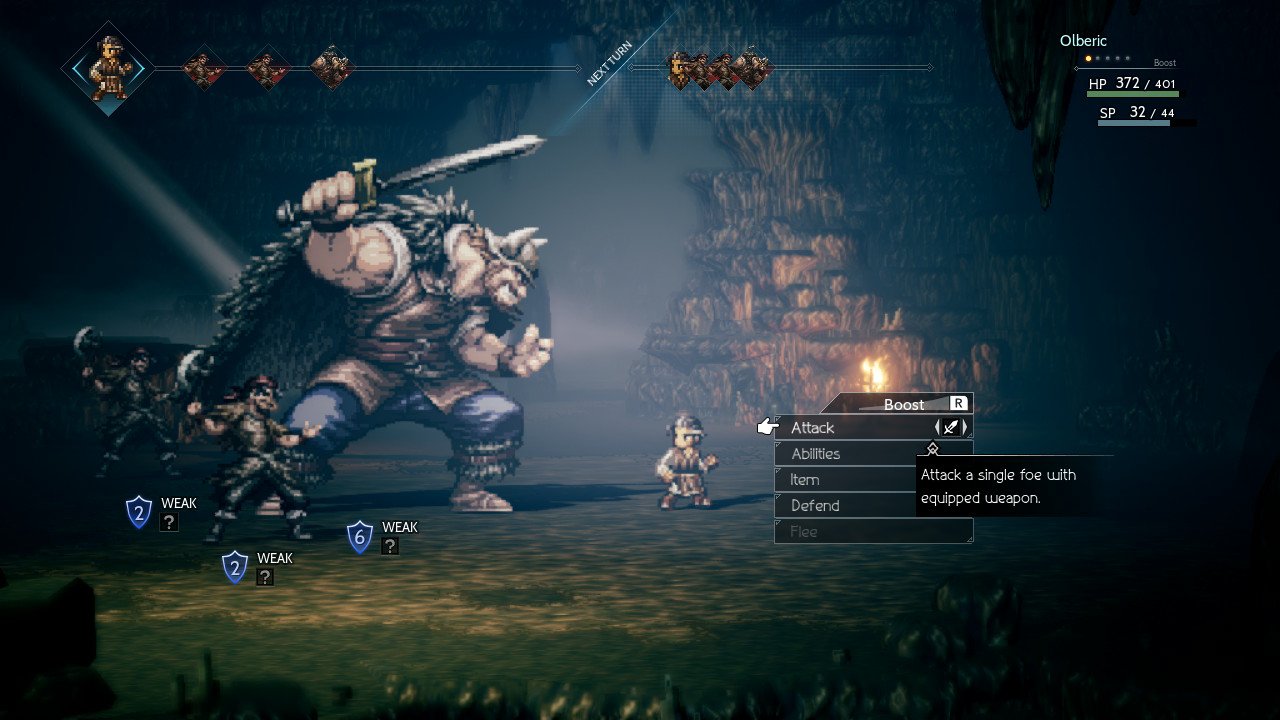
If you own a Switch and are a fan of the JRPG genre, Square-Enix’s Octopath Traveler has likely been a point of excitement for you from the moment it was initially shown. The first trailer stunned many with its gorgeous visuals, but there was still the question of whether there would be sufficient substance to back these graphics. Ever looking for a new favourite JRPG and extremely optimistic from the outset, I dove in to see how much there was to find.
Now, before we get started with the central part of the review, I want to express my feeling that Octopath Traveler has earned the “If you’re excited about it, go get it” badge. Basically, if you’ve been waiting for this one to release, don’t ruin the experience by reading any more on it. Yes, there are going to be some elements that will likely disappoint, but the core of the game is solid, slick and worth experiencing. I’m going to be revealing some information not shown in the trailers, so don’t read on unless you’re genuinely undecided and willing to spoil a few discoveries!
Let’s get the obvious one out of the way first – yes, this game is an absolute treat to look at. The “HD-2D” style is a delight from beginning to end, whether you’re running around town and through buildings, or in the midst of a battle. The light effects in combat are delightful, never failing to fill me with joy every time I launched a massive attack. Even the enemy design is set on a middle-ground between static and animated, making minor but definite movements that give them life beyond the sprite.

It’s difficult to describe the setting of Octopath Traveler; the continent of Orsterra is a wide one, filled with diverse landscapes and different lifestyles. Starting from the origin of one of the eight members of the main cast, you’ll journey and learn the significance of this realm’s rulers, its history, its gods. If there’s one element that really ties together well within this game, it’s Orsterra itself. You’ll find yourself carefully reading every NPC dialogue box digging for more information about your current town out of pure interest.
To embark on this journey across the realm, we have our leading cast of eight characters. While each one represents a standard fantasy class (the rogue, the cleric, and so on,) the characters themselves are often more in-depth than this. I liked every single member of the cast, from the way they approach problems and their outlook on life, to their manners of speech and little quirks. The upside of an equal-priority party is that each has been given equal design emphasis, and it really shows.

This is mostly undermined, however, by the simple fact that Octopath Traveler tells eight short stories and little more. While a couple of them have mysteries and touching moments, the majority feel like a brief tour of the world pushed forward by a weak premise. While you could absolutely argue this is understandable, as it would be an excessively long game to feature eight full-length stories, it does need to be questioned whether the game benefits from splitting its attention in this way.
Further, they fail to tie these stories together, in some very substantial ways. As you make your way through, you’ll see the image of a background tale start to form, but this is reserved to the realm of “extra content.” On central display in the campaign are the eight individual paths, as stand-alone stories. Stand-alone in the extreme, as your eight characters will never interact with each other beyond brief segments of isolated dialogue between two or three characters. They don’t appear in each other’s stories despite this making no sense: a character might be implied as “alone” in the plot, despite actually being part of a party of four. As I was excited about the interaction between these eight and how they would influence each other over the course of the story, this left me sorely disappointed.
Since I ultimately recommend this game despite my above criticisms, this should really emphasise how much I adore the addictive simplicity of the combat system. It has one essential element that separates it from a standard JRPG combat system: a passively built supply of “Boost Points.” These boosts augment almost everything you can do in combat, almost always in significant ways. With a hard cap of 5 points and a rule that using points means that you don’t get any points next turn, trying to work this system to your benefit is consistently satisfying.

You’re going to need to master this system to survive some of the encounters you’re up against. From random encounters to the massive bosses, the game has been balanced carefully to offer a consistent challenge from start to finish. Nothing keeps my interest better in a JRPG than to be pushed to improve, even in small fights. That said, some may find it exhausting to need to pay attention to each and every encounter, especially when merely trying to cross a simple field or make it out of a cave.
It’s not as if they don’t give you a range of tools to tackle these problems with, however. Character progression is straightforward (a basic “spend points to unlock active and passive skills”) but blended with the ability to equip a secondary job and retain passive skills from those jobs, I eventually had a very unique primary party of four. It’s impressive to pull this off in a way that has an impact but remains balanced, and I’d be fascinated to see how different other people’s parties came out.

A few weird things to bring up, for better and worse. Your initial character choice is locked to your party for the majority of your playthrough, which, while I was initially incredibly resistant to this, it did give me a stronger attachment to this character, and I felt this was a smart decision in the end. Also positive is the side-questing system, which very much leaves it up to you to work out how to use your character’s skills to solve the issue. There’s no hint and minimal information recorded in the journal: you just need to investigate and think, and I love it.
On a less positive note, equipment is weirdly organised (rarely in a sensible order,) meaning you either have to keep your stock emptied out or be willing to scroll through a long list to manually optimise yourself. Finally, the “party banter” (one of my favourite things to watch, as the only interaction between the cast) would only occur between your active four cast members, meaning I likely missed out on a significant amount of potential entertainment from absent party members.
Finally, I’d like to give special appreciation to the soundtrack here. I am rarely one to discuss this, feeling that musical taste is very subjective and hard to pin, but every single melody on offer here is well-themed and beautiful. The snowy fields, the desert plains, each zone has a fantastic theme that suits perfectly. The combat tunes are easily in my very top I’ve ever heard, and literally had me bopping along to them in near every encounter.

For everything I could criticise about the design of Octopath Traveler, I would not hesitate to recommend the experience to any fans of the genre. Between excellent character customisation and one of the best combat systems I’ve had the joy to experience, the faults are easier to accept. However, if you’re hoping for an in-depth story or a cast of eight characters standing side-by-side, you won’t find that here. While it certainly could have been improved on, this is still an absolute must-play for Switch owners out there.











